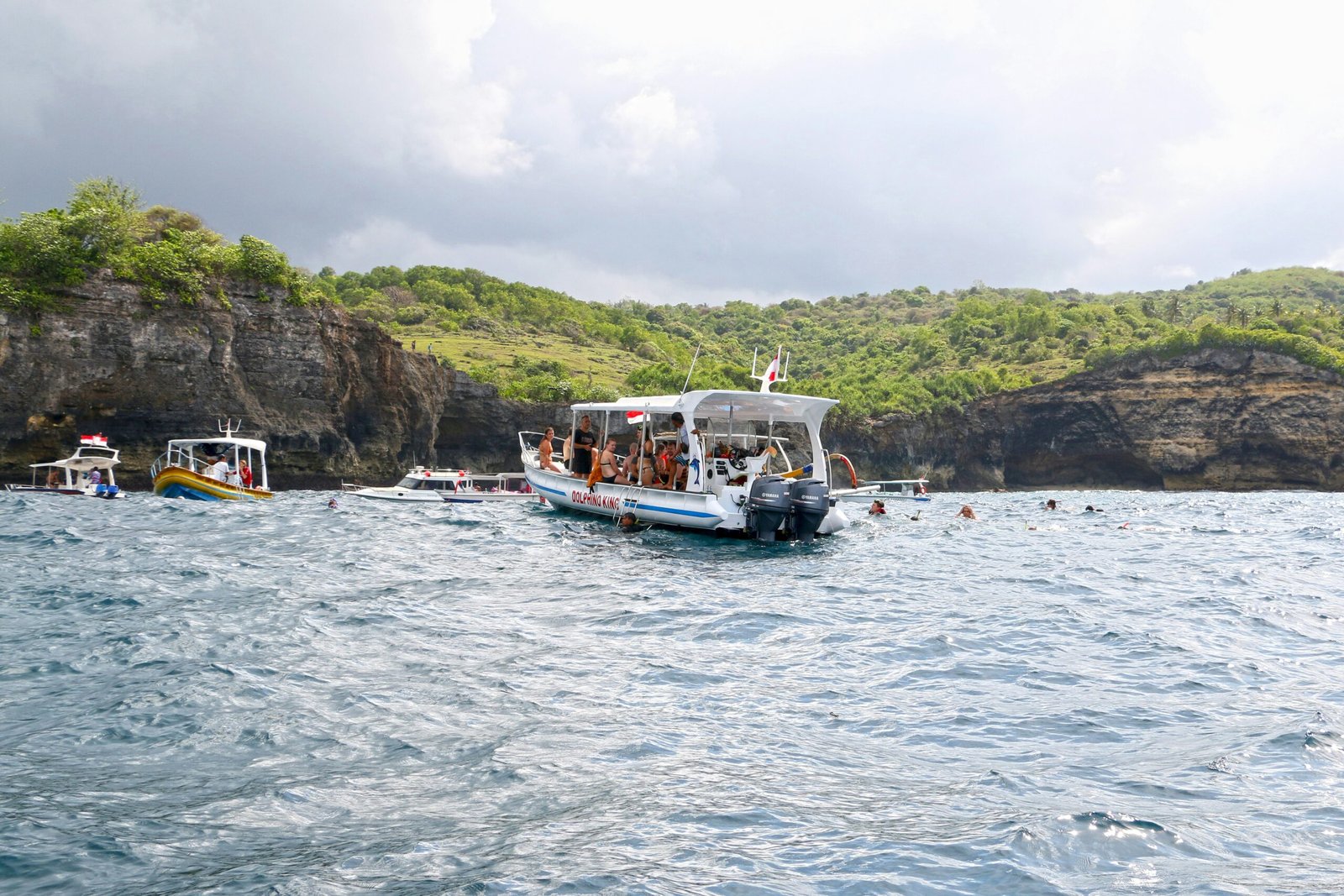Introduction to Adventure
Adventure, in its essence, represents a break from the mundane, a venture into the unknown that challenges the boundaries of comfort and familiarity. It is a pursuit that has captivated the human spirit for generations, offering not only the thrill of the experience but also a myriad of psychological and physical benefits. Engaging in adventurous activities can significantly boost one’s confidence, allowing individuals to confront and overcome their fears. This process of facing the unknown and emerging victorious instills a profound sense of self-assurance and resilience.
On a psychological level, adventure serves as a powerful catalyst for personal growth. It demands adaptability and problem-solving skills, fostering mental agility and a proactive mindset. The challenges encountered during adventurous pursuits often require quick thinking and decisive action, thereby enhancing cognitive functions. Moreover, the sense of accomplishment that follows the successful completion of an adventure can be deeply fulfilling, reinforcing a positive self-image and a sense of empowerment.
Physically, adventurous activities offer substantial health benefits. Whether it is hiking through rugged terrains, climbing steep mountains, or engaging in water sports, such activities promote cardiovascular health, improve muscle strength, and enhance overall physical fitness. The exertion involved in these pursuits can also lead to better stamina and endurance. Additionally, spending time in nature has been shown to reduce stress levels and improve mental well-being, providing a holistic benefit to both mind and body.
Adventure is not just about the thrill; it is a pathway to discovering one’s limits, pushing beyond them, and experiencing life in its fullest form. It is a journey that encourages individuals to step out of their comfort zones, embrace uncertainty, and grow through experience. In essence, the significance of adventure lies in its ability to transform lives, fostering a deeper connection with oneself and the world around.
Defining Adventure: What Makes an Activity Adventurous?
Adventure, by its very nature, is a subjective experience. What makes an activity adventurous often hinges on a combination of risk, novelty, and the level of challenge it presents. These elements can vary significantly from one individual to another, influenced by personal thresholds and past experiences.
Risk is a pivotal factor in defining adventure. Engaging in activities that involve a degree of uncertainty or danger can provide a thrilling sense of accomplishment. For some, this might mean taking on extreme sports such as skydiving, bungee jumping, or rock climbing. These activities inherently carry higher stakes, pushing participants beyond their comfort zones.
Novelty is another crucial element. The unknown or unfamiliar can transform a routine task into an adventurous endeavor. Traveling to remote destinations, exploring uncharted territories, or immersing oneself in different cultures can all be seen as adventurous pursuits. The newness of these experiences invites a sense of discovery and wonder.
The level of challenge also plays a significant role. An activity that tests one’s physical or mental limits is often perceived as adventurous. This could range from enduring a multi-day hiking expedition to solving complex puzzles in an escape room. The common thread in these activities is the demand for effort, resilience, and perseverance.
Interestingly, what one person perceives as adventurous might be routine for another. Personal thresholds for adventure can evolve over time, influenced by factors such as age, experience, and personal growth. For instance, an individual who once found camping in the wilderness daunting might later seek more intense experiences like mountaineering or scuba diving.
In conclusion, adventure is a multifaceted concept that encompasses risk, novelty, and challenge. It is an ever-changing spectrum, tailored by individual perceptions and evolving thresholds. Whether through extreme sports or immersive travel experiences, the pursuit of adventure offers a journey beyond the ordinary, enriching our lives with excitement and growth.
Top Thrilling Adventure Activities Around the World
For thrill-seekers, the world offers an array of heart-pounding adventure activities that push the boundaries of human experience. Each activity presents an opportunity to explore nature’s extremes and test personal limits. Below are some of the most exhilarating adventure activities that attract enthusiasts from around the globe.
Skydiving: Known as the ultimate adrenaline rush, skydiving involves jumping out of an aircraft and free-falling before deploying a parachute. Locations such as Queenstown in New Zealand, Interlaken in Switzerland, and Dubai offer breathtaking views that make the experience even more unforgettable. The sensation of free fall combined with panoramic vistas creates a unique and thrilling experience.
Bungee Jumping: This activity involves leaping from a high platform while connected to a large elastic cord. The Victoria Falls Bridge on the border of Zambia and Zimbabwe, the Macau Tower in China, and the Kawarau Bridge in New Zealand are some iconic spots for bungee jumping. The free-fall and subsequent rebound provide an intense rush of adrenaline.
Mountaineering: Scaling some of the world’s highest peaks offers both physical and mental challenges. The Himalayas in Nepal, the Andes in South America, and the Alps in Europe are prime destinations for mountaineers. Each mountain range offers unique terrains and climates, making the ascent a test of endurance and skill.
Scuba Diving: Exploring underwater worlds filled with vibrant marine life is a mesmerizing experience. The Great Barrier Reef in Australia, the Blue Hole in Belize, and the Red Sea in Egypt are top destinations for scuba diving. These locations provide divers with awe-inspiring underwater landscapes and rich biodiversity.
Paragliding: This activity allows adventurers to glide through the air using a lightweight, free-flying glider aircraft. Paragliding spots like Pokhara in Nepal, Chamonix in France, and Oludeniz in Turkey offer stunning aerial views and the thrill of soaring like a bird. The feeling of floating above the landscape is both serene and exhilarating.
These adventure activities not only provide an adrenaline rush but also offer a unique way to experience different parts of the world, turning each expedition into an unforgettable journey beyond the ordinary.
The Science Behind Adventure Seeking
Adventure seeking is a multifaceted phenomenon that has intrigued researchers for decades. At its core, the pursuit of adventure is driven by a complex interplay of psychological and physiological factors. One of the most compelling reasons people seek adventure is the adrenaline rush associated with high-stakes activities. Adrenaline, also known as epinephrine, is a hormone that prepares the body for ‘fight or flight’ responses. When individuals engage in adventurous activities, their bodies release adrenaline, leading to heightened senses, increased heart rate, and a surge of energy. This physiological response can create a sense of euphoria and invigoration, making the experience highly rewarding.
Another critical component of adventure seeking is the role of dopamine. Dopamine is a neurotransmitter that plays a significant role in the brain’s reward system. Engaging in adventurous activities stimulates the release of dopamine, which enhances feelings of pleasure and satisfaction. This dopamine release can create a positive feedback loop, encouraging individuals to seek out new and thrilling experiences continually. The pursuit of adventure can thus become a compelling way to achieve a heightened sense of happiness and fulfillment.
The concept of ‘flow’ is also integral to understanding why people seek adventure. Coined by psychologist Mihaly Csikszentmihalyi, ‘flow’ refers to a state of complete absorption and immersion in an activity. When individuals are in a state of flow, they experience a loss of self-consciousness and a sense of timelessness. Adventurous activities often induce this flow state, providing a deep sense of engagement and satisfaction. The ability to achieve flow can significantly contribute to one’s mental well-being, offering a respite from daily stressors and enhancing overall quality of life.
Ultimately, the science behind adventure seeking reveals that these activities are not merely about thrill and excitement. They are deeply rooted in our psychological and physiological makeup, offering profound benefits for mental well-being and happiness. By understanding the underlying mechanisms, we can better appreciate the allure of adventure and its essential role in human experience.
Preparing for an Adventure: Tips and Precautions
Embarking on adventurous activities can be exhilarating, but thorough preparation is crucial to ensure a safe and enjoyable experience. First and foremost, physical fitness plays a significant role in adventure readiness. Engaging in regular exercises such as cardio, strength training, and flexibility workouts can help build the stamina and resilience needed for demanding activities. Tailoring your fitness routine to the specific adventure you plan to undertake can further enhance your preparedness.
Mental readiness is equally important. Adventures often present unexpected challenges, requiring quick thinking and adaptability. Mental preparation can involve visualization techniques, stress management practices, and building a positive mindset. A calm and focused mental state can make a significant difference when navigating through unpredictable situations.
Equipping yourself with the right gear is another essential aspect of preparation. Depending on the activity, this might include protective clothing, specialized equipment, and emergency supplies. Investing in high-quality gear can prevent injuries and enhance performance. Always check the gear for any signs of wear and tear before use and ensure you understand how to operate any technical equipment.
Safety precautions cannot be overstated when it comes to adventurous activities. Proper training is paramount; consider taking courses or workshops to learn essential skills and techniques specific to your chosen activity. Understanding the risks associated with the adventure and knowing how to mitigate them is vital. Researching and selecting reputable adventure providers can also contribute significantly to your safety. They often have experienced guides, well-maintained equipment, and comprehensive safety protocols in place.
In addition, always inform someone about your plans, including your expected return time, and carry a means of communication in case of emergencies. By following these tips and precautions, you can set the foundation for a successful and memorable adventure.
Stories of Unforgettable Adventures
Embarking on a journey beyond the ordinary often starts with a compelling motivation. Take, for instance, the story of Sarah, a corporate lawyer who decided to leave her stable job to trek the entirety of the Appalachian Trail. Her motivation stemmed from a desire to reconnect with nature and challenge her physical limits. The journey was not without its trials; inclement weather, physical exhaustion, and isolation were constant companions. However, Sarah emerged from the experience with a profound sense of accomplishment and a newfound resilience that she carries into every aspect of her life.
Similarly, consider the tale of Mark, an engineer who took on the daunting task of cycling across continents. His motivation was rooted in a passion for cycling and a curiosity about the diverse cultures of the world. Mark faced numerous challenges, including navigating unfamiliar terrain and dealing with mechanical failures far from any help. Despite these obstacles, his journey yielded invaluable insights into the lives of people across different countries and fostered a deep appreciation for the interconnectedness of humanity.
Then there’s the inspiring adventure of Emma, a school teacher who set out to sail solo around the world. Her motivation was driven by a lifelong dream to conquer the high seas and prove that ordinary individuals are capable of extraordinary feats. Emma’s journey was fraught with challenges like severe storms, equipment malfunctions, and long periods of solitude. Yet, these adversities only strengthened her resolve. Upon completing her voyage, Emma not only achieved her dream but also inspired countless others to pursue their own adventures, no matter how daunting they may seem.
These stories underscore the essence of adventure—stepping out of one’s comfort zone, overcoming formidable challenges, and ultimately experiencing personal growth. They serve as powerful reminders that the most unforgettable adventures arise from the courage to embrace the unknown and the determination to persevere, no matter the obstacles. Such tales offer a personal touch to the concept of adventure, demonstrating that anyone can embark on their own journey beyond the ordinary.
The Impact of Adventure on Personal Growth
Engaging in adventurous activities often leads to profound personal growth. One of the most notable benefits is increased resilience. When individuals face challenging situations during adventures, they learn to adapt and overcome obstacles. This adaptability not only helps during the adventure itself but also translates to everyday life, where resilience is a valuable trait. According to psychologist Dr. Karen Horney, “Resilience is not just about bouncing back from adversity; it’s about the personal growth experienced in the process.”
Another significant aspect of personal growth through adventure is improved problem-solving skills. Adventurous activities frequently present unpredictable scenarios that require quick thinking and innovative solutions. For instance, mountaineers navigating treacherous terrains must assess risks and make critical decisions promptly. These experiences enhance their cognitive flexibility, making them better problem solvers in various life situations. As adventurer Bear Grylls puts it, “The mind is the most powerful weapon, and the ability to think on your feet is crucial for survival.”
Moreover, participating in adventurous activities fosters a greater appreciation for life. When individuals push their physical and mental limits, they gain a deeper understanding of their capabilities and the value of life itself. This heightened appreciation often leads to a more positive outlook and greater satisfaction with day-to-day experiences. Research by the American Psychological Association supports this, indicating that people who engage in high-adventure activities report higher levels of life satisfaction and well-being.
In conclusion, the impact of adventure on personal growth is multifaceted, encompassing increased resilience, enhanced problem-solving skills, and a deeper appreciation for life. These benefits underscore the importance of stepping out of one’s comfort zone and embracing the challenges that come with adventurous activities.
Conclusion: Embracing Adventure in Everyday Life
As we’ve explored throughout this blog post, the realm of adventurous activities spans a wide spectrum of experiences, from the extreme to the more accessible. Whether it’s scaling mountain peaks, diving into the depths of the ocean, or embarking on a thrilling safari, the essence of adventure lies in stepping beyond the familiar and embracing the unknown. However, adventure is not confined to grandiose endeavors. It can be seamlessly woven into the fabric of daily life.
Adventure, at its core, is about pushing boundaries and challenging oneself. This can manifest in myriad ways, such as trying a new sport, embarking on an unplanned road trip, or even experimenting with a new recipe in the kitchen. The key is to remain open to new experiences and to approach them with a spirit of curiosity and enthusiasm. Small acts of adventure can invigorate our routines and provide a fresh perspective on life.
Moreover, incorporating elements of adventure into everyday life fosters personal growth and resilience. When we step out of our comfort zones, we develop new skills, build confidence, and gain a deeper understanding of ourselves and the world around us. These experiences, whether big or small, contribute to a richer, more fulfilling life.
Therefore, we encourage you to seek out opportunities for adventure, no matter how minor they may seem. Take a different route to work, sign up for a class in a subject you’ve always been curious about, or plan a weekend getaway to a nearby town you’ve never visited. By continuously seeking new experiences, you can transform the ordinary into the extraordinary and keep the spirit of adventure alive in your everyday life.
Incorporating adventure into your daily routine doesn’t require grand gestures. It’s about the mindset—embracing the unknown, welcoming challenges, and continually striving to experience life to its fullest. So, step out of your comfort zone and embark on your own journey beyond the ordinary. Adventure awaits in the simplest of actions and the most unexpected places.
FAQs about Adventure Activities
When embarking on an adventurous journey, it’s natural to have numerous questions, especially if you are a beginner. Below, we answer some of the most common queries to help you prepare for your next adventure.
What are the safest adventure activities for beginners?
For those new to adventure activities, starting with safe and less intense options is advisable. Hiking, kayaking, and zip-lining are excellent choices for beginners. These activities provide a thrill without requiring extensive training or experience. Hiking allows you to explore various terrains at your own pace, while kayaking offers a peaceful yet exhilarating experience on water. Zip-lining, on the other hand, gives you an adrenaline rush in a controlled environment.
How can I find reputable adventure providers?
Finding a reputable adventure provider ensures your safety and enhances the overall experience. Begin by researching online reviews and ratings on platforms like TripAdvisor or Yelp. Look for certifications and affiliations with recognized industry bodies such as the International Rafting Federation or Professional Association of Diving Instructors (PADI). Personal recommendations from friends or family who have had positive experiences can also be invaluable. Ensure that the provider follows strict safety protocols and employs experienced guides.
What should I do if I feel scared during an adventure?
Feeling scared during an adventure is common, especially if you’re stepping out of your comfort zone. The first step is to acknowledge your fear and understand that it is a natural response. Communicate your feelings with your guide; they are trained to handle such situations and can provide reassurance or modify the activity to suit your comfort level. Breathing exercises and focusing on positive thoughts can also help manage anxiety. Remember, it’s okay to opt out if the fear becomes overwhelming; your safety and well-being are paramount.
By addressing these common questions, we hope to provide you with the confidence and knowledge needed to embark on your own adventurous journey. Whether you’re a beginner or looking to try something new, understanding these aspects can significantly enhance your experience and ensure your safety.



